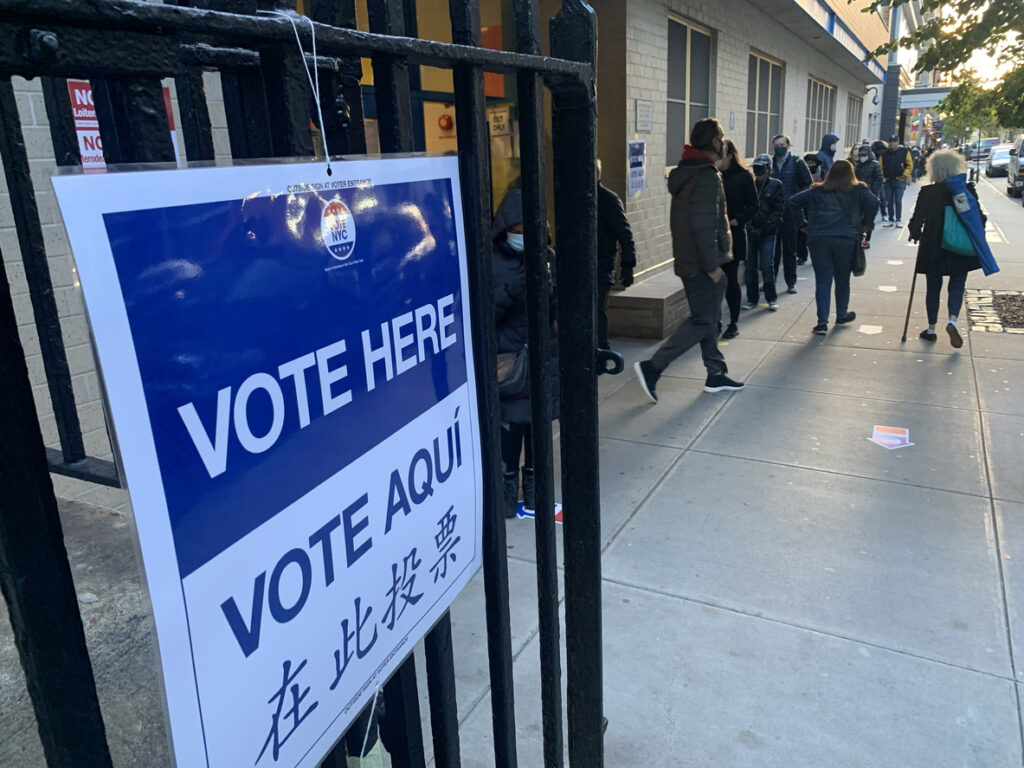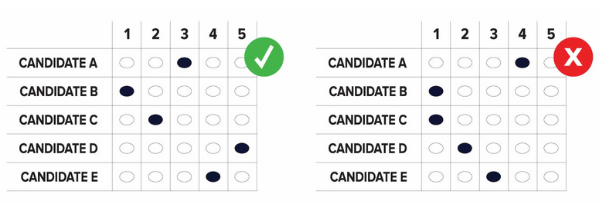
How Ranked-Choice Voting is Changing the Landscape of NYC Politics

New York City will now use Ranked-Choice Voting (RCV) in primary and special elections for local offices citywide. With an unprecedented 70% of seats up for grabs in 2021, including the Mayor, Comptroller, all five Borough Presidents, and over 35 Council Seats, this new voting system has huge implications on the future of New York politics.
Less negative campaigning tactics. An increased opportunity for diverse candidates that don’t have a treasure trove of campaign funds. Politicians elected “by the people.” These are just a few of the goals that proponents of ranked-choice voting are looking to accomplish. New Yorkers overwhelmingly elected to use RCV in a 2019 ballot measure that passed with 73.5% support.
The notion for a more democratic voting process that sparked an electoral reform wave in the early 90’s in San Francisco has now spread to cities nationwide and is finally making its way to the Big Apple. In 2019, the Charter Revision Commission (CRC) developed five proposed revisions to the New York City Charter – one of which was RCV. Mayor Bill de Blasio and DemocracyNYC recently announced a $15 million voter education campaign to inform New Yorkers on the new RCV system ahead of the primary elections on June 22.
How Does Ranked-Choice Voting Work?
Ranked-Choice Voting (RCV) describes voting systems that allow voters to rank candidates in order of preference, and then uses those rankings to elect candidates who best represent their constituents. The goal of RCV is to give voters more say in who gets elected. Even if your top choice candidate does not win, you can still help choose who does get elected.
Every voter will receive a ballot (see sample below), listing all qualifying candidates. Each voter can then rank up to five candidates in order of preference. They can also choose to vote for one sole candidate – although, RCV is meant to encourage ranking up to five to expand the pool of eligible candidate winners. If a candidate receives more than 50% of first-choice votes, they are automatically the winner. However, if no candidate earns more than 50% of first-choice votes, then counting will continue by rounds of elimination. At the end of each counting round, the candidate with the least votes will be eliminated. Using the ballot below as an example, if you ranked ‘Candidate B’ first but they are eliminated, your vote will then go to your second choice, in this case ‘Candidate C.’ This process continues until there are two candidates left, and the candidate with the most votes is deemed the winner.
According to Rank the Vote NYC, the coalition of community-based organizations, elected officials and other political leaders behind the RCV movement, the majority of New York City primary and special election winners receive less than 50% of the vote. By allowing voters to rank their top five candidates of choice, the group argues that this would ensure a more fair and democratic process by forcing candidates to appeal to more voters than just their base.
With the relatively short period until the June primaries and curtailed regular in-person campaigning activities, many are worried that this will further disproportionally affect those hit hardest by the pandemic – women, people of color, and immigrants. At a time of irreparable loss, pain, and grief, the lack of equitable access to civic engagement resources, in this case information about RCV, could potentially further disenfranchise those same communities. In early December, a coalition of Brooklyn and Queens political leaders and community groups came together to publicly announce their opposition to ranked-choice voting implementation in 2021. They filed a lawsuit against the two agencies overseeing the process, the New York City Board of Elections (BOE) and the New York City Campaign Finance Board (NYCCFB). Their lawsuit argued that the agencies “have failed to meet their obligations mandated by the City Charter to roll out the new voting system and educate communities about it” and will ultimately disenfranchise communities of color and those with English language barriers. However, in mid-December 2020, Manhattan Supreme Court Judge Carol Edmead refused to halt of the system’s rollout.
A 2015 study based in San Francisco, found that there is indeed a correlation with “overvoting” (a type of voter error in which too many candidates are selected) being more common in communities of color, immigrants and the elderly. That being said, the study also showed the pattern of overvoting is similar in both RCV and non-RCV elections, supporting the argument that overall voter education is needed, not just RCV-related education campaigns. The recent announcement of a voter education campaign RCV should be helpful in reducing ballot errors.
On the other hand, RCV is proven to increase the representation of women and people of color running for public office. A 2020 study by RepresentWomen found that “as of April 2020, nearly half of all mayors (46%) and 49% of all city council seats decided by RCV are held by women.” While evidently, RCV increases progressive electoral results, the need for reliant and safe software technology to actually tabulate the votes is equally necessary.
According to the NYCCFB, there are officially 518 participating candidates running for public office in 2021– or in other words, a whole lot of votes to count.
Thus, a key issue in RCV is the computer software system to count and distribute votes. While other cities that have adopted the ranked-choice voting system already have computer software set in place to accurately count the votes, New York has yet to do so – which has forced three special elections across the Bronx and Queens to hand count 20,983 total ballots over 25 total rounds of tabulation. Additionally, there was only a single vendor that responded to the city BOE’s RFP back in November 2020, The Ranked Choice Voting Center. Their system, known as the “Universal Ranked-Choice Voting Tabulator,” is currently used to tabulate results in three jurisdictions across Michigan and Utah; yet the number of active voters in the 24th City Council District in Queens (approximately 82,000) is more than those three jurisdictions combined. This special election in the 24th CD, which took place on February 23rd, was the first RCV election and it took the BOE nearly a month to declare the winner, Selvena Brooks-Powers.
With NYC serving 8.4 million residents, of which 5.56 million are eligible voters as of November 1, 2020, a successful ranked-choice voting rollout will be instrumental in order to secure a City government that is reflective of its constituents and priorities for the next four years – especially as it relates to helping our city recover from the economic and emotional brunt of the pandemic and continue to be the best city on the planet.
For examples of RCV in action, see the following links:
You can access official educational resources in Spanish, Arabic, Russian, Haitian Creole, Mandarin and more here.
Interested in helping educate fellow New Yorkers on RCV? Ranked the Vote NYC is hosting an upcoming weekend of action on May 15 and May 16!
Upcoming Important Dates
- The primary election is Tuesday, June 22, 2021
- The deadline to register to vote is Wednesday, May 28, 2021
- Early voting begins on Saturday, June 12, 2021
- The deadline to request an absentee ballot is Tuesday, June 15, 2021
- The general election is Tuesday, November 2, 2021
If you have questions about Ranked-Choice Voting, or want to learn how Capalino can help you succeed in New York, contact Jesse Aman at jaman@nullcapalino.com.



